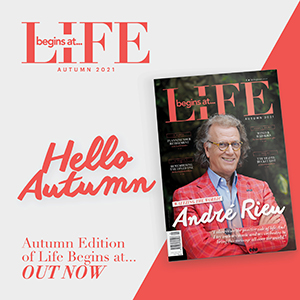With one in ten people having poor lung health in Australia, the Just One Breath test is well worth taking.
Lung disease is not just cancer. It includes asthma, chronic obstructive pulmonary disease, bronchiectasis, cystic fibrosis, chronic cough, pulmonary fibrosis and more.
Recent research by Lung Foundation Australia found most Australians believe they don’t have a lung health issue, and 50 per cent of adults rarely think about their lung health.
But with millions of Australians affected by lung disease every day, Just One Breath aims to shift focus from the negative stigma of lunch disease to empowering Australians to improve their awareness of lung health.
Quirky facts on the power of Lung Health from Lung Foundation Australia
- Over 90% of your body’s energy comes from your breath
- We breath in and out some 22,000 times a day, which equates to around 8,000 to 9,000 litres of air each day
- The right lung is slightly larger than the left
- We lose half a litre of water a day through our breath – this is the water vapour we see when we breathe onto a
- The surface area of the lungs is roughly the same size as a tennis court
- The capillaries in the lungs would extend 1,600 kilometres if placed end to end
- Hairs in the nose help to clean the air we breathe, as well as warming it
- A person at rest breathes between 12-15 times per minute
- The average time an adult can hold their breath is between 30 to 60 seconds
- The lungs are the only organs that are naturally buoyant and can float on water
- Optimal Breathing helps promote weight loss, as oxygen burns fat and calories
- Science has proven that cancer is anaerobic – it does not survive in high levels of oxygen
Lung Health Tips from Lung Foundation Australia
- Do the Lung Health Checklist. Take a couple of minutes to do the online lung health checklist at www.justonebreath.com.au. These simple questions will help you to recognise symptoms of lung disease and the need to act promptly if you have any.
- Make your life a no-smoke zone. Avoid smoky bars and smoking areas in restaurants. It doesn’t seem fair but
- second-hand smoke can still damage your lungs.
- ? Hand hygiene is important. As the most common way to spread respiratory infections, it’s wise to practice the ‘safe
- coughing’ technique (cough into your elbow, not your hands to avoid the spread of infection).
- ? Use the stairs whenever you can. Elevators and escalators might make things seem easier. But exercise that makes
- your heart beat faster, like climbing stairs, riding a bike, or walking briskly, is very important in keeping your heart
- and lungs in good shape.
- ? Eat healthy and maintain a healthy weight. Healthy eating means choosing a variety of foods from each of the five
- food groups every day, in suitable proportions including veggies; fruit; grain foods, mostly wholegrain varieties, such
- as breads, cereals, rice and pasta; lean meats and poultry, fish, eggs, tofu, nuts and legumes; and dairy products
- such as milk, yoghurt and cheese. Ensure you achieve regular exercise per week.
- ? Avoid dusty environments. Always wear a mask if you work in a dusty environment such as a farm, factory etc.
- ? Avoid smoky environments if you have an existing respiratory condition. This includes wood fires, bush fires etc.
- ? Lung disease doesn’t discriminate. It affects the young, old, male, female, smokers, former-smoker, and non-
- smokers.
Take the Lung Health checklist at www.justonebreath.com.au.




















Add Comment